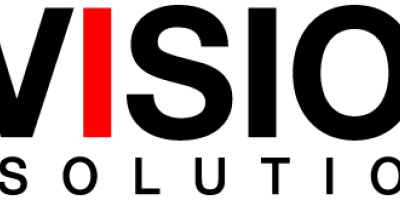The *noMAX HA/DR solution from Maximum Availability ensures unmatched data integrity and optimal recovery time for the IBM System i.
Written by Michael Stuhlreyer
In today's highly competitive global marketplace, it is a business imperative to ensure the continuity of critical business operations and to protect a company's information assets. This makes business continuity an essential objective for companies of all sizes. Businesses must satisfy themselves that they have a comprehensive high availability/disaster recovery (HA/DR) solution in place.
The baseline value of such a solution should be gauged in terms of recovery time and data integrity, which is referred to as the Recovery Time Objective (RTO) and the Recovery Point Objective (RPO). Recovery time is the ability to switch to a backup system with minimal delay when a service interruption or system failure occurs. In doing so, there needs to be a recovery point that makes certain the data on the target machine is exactly the same as the data on the production machine at any given moment.
"What's the point of having an HA/DR solution if you're not role-swap-ready or if it takes days to determine if your systems are in sync and you need to check the integrity of your data?" asks Simon O'Sullivan, Senior VP of Sales for Maximum Availability Ltd. Maximum Availability, developers of the *noMAX suite of HA/DR solutions for the IBM i, has been solving these challenges for a decade while establishing a proven track record with its customers. "You need the confidence of knowing that, regardless of the size and complexity of your IBM i environment, your solution not only delivers true real-time replication and optimal RTO and RPO, but that it is also designed to achieve optimal role-swap performance within the constraints of your environment. We are seeing customer situations whereby they are achieving a role-swap between systems in less than five minutes."
That confidence, according to O'Sullivan, is largely a function of an HA/DR solution's architecture; in the case of the *noMAX suite, the architecture exclusively utilizes the IBM System i's remote journaling technology, which is acknowledged as the most efficient way to move information from one IBM i environment to another.
Prior to remote journaling, he reminds us, HA solutions for OS/400 typically had to send and receive the journal data from within the HA product itself. When IBM introduced remote journaling, this functionality was provided free by the IBM i operating system.
O'Sullivan points out that remote journaling represented a major step forward in terms of the architecture and capability enabling HA on the IBM i platform. It allowed Maximum Availability to create a replication solution uniquely capable of handling the extreme high-volume, real-time replication requirements for the toughest environments while still maintaining the usability and simplicity to make HA/DR available to the broader IBM i marketplace.
Designing for remote journaling, rather than trying to retrofit it later, allowed Maximum Availability to make the technology integral to its solution's code and architecture. The design also provides virtually unlimited scalability, real-time sequential replication with minimum latency, and advanced data protection features, all the while reducing the bandwidth requirements during replication and the system resource demands placed on the production machine.
Another important design feature of *noMAX is that it does not need the system audit journal to detect structural and non-journaled object changes on the production system. HA/DR solutions that require customers to turn on the system audit journal result in extra overhead on the production system.
When objects have been detected as changed via the audit journal and then requested for refresh to the backup system, it is possible for lock conditions to arise, which means the objects cannot be sent at that time. When the objects are saved and sent to the backup system, the object and its following data have to be matched to allow normal replication to continue.
The *noMAX design ensures that the issues surrounding the use of the audit journal have been removed so the replication of object changes can occur in real time and in sync with the data, which then follows. All of this is achieved via remote journaling. No other network-send processes are required.
According to David Ginn, KSB Hospital's Director of Information Systems, a *noMAX customer in Illinois, "Two years ago, it wasn't a big deal if we were down for an hour for backups or three hours for an upgrade or even 12 hours, but with our move to paperless charts, it was mandatory that we have our systems up 24x7. *noMAX provides us with two significant benefits: disaster recovery capabilities and uptime."
Other key features of the *noMAX architecture include advanced data protection and integrity and the use of virtually unlimited concurrent apply threads. The advanced data protection and integrity feature runs continuously. It automatically performs checks on the data as it is being replicated. This ensures the integrity prior to the final update being added to the file on the backup system and verifies that source and target data remain consistent.
The use of multiple concurrent apply threads provides incredible flexibility in maximizing replication performance. It's not uncommon for a company to lose power or network connectivity. When that happens, they'll have a backlog of changes accumulating on the production system that aren't getting replicated to the backup, O'Sullivan explains. "So it's a huge benefit to be able to configure more apply groups. This increases the efficiency and the ability to quickly catch up on the backlog once the power is back on or the network is restored. That's essential because the smaller that window, the less exposure you'll have, and it's all about minimizing exposure. The more restricted you are on the number of apply groups, the longer you're not synchronized. And the longer you're not synchronized, the bigger your backlog is and the more exposed you become. With *noMAX, there is minimum latency, and the locking issues which can arise due to the use of the audit journal are not experienced."
*noMAX is virtually unrestricted from a scalability standpoint, which has been proven in real-world situations. It is run in large-scale telecommunication companies with huge transaction volumes and also in hosting companies with dozens of individual customers.
O'Sullivan emphasizes that the *noMAX suite is not just an enterprise solution or just an SMB solution; it's truly both, scalable across all IBM i environments. In addition, the administration features of the *noMAX suite mean there is no need for a full-time dedicated staff to manage it. The *noMAX suite can be installed and managed remotely and includes an intuitive interface through both the traditional green-screen command input and a GUI format running on a Microsoft Windows PC. This allows customers to easily make changes to their *noMAX systems. By simply dragging and dropping configuration information between systems, setup could not be easier. This has the benefit of keeping the configuration consistent and virtually eliminating human error. The *noMAX user interfaces allow users to quickly view replication status, and any data-synchronization issues are highlighted via integrated alerts.
As KSB Hospital found, the years of experience built into the *noMAX product delivered quick and easy role swaps and true data integrity on the backup machine, which, in the end, is what all HA/DR users strive for.






















 More than ever, there is a demand for IT to deliver innovation. Your IBM i has been an essential part of your business operations for years. However, your organization may struggle to maintain the current system and implement new projects. The thousands of customers we've worked with and surveyed state that expectations regarding the digital footprint and vision of the company are not aligned with the current IT environment.
More than ever, there is a demand for IT to deliver innovation. Your IBM i has been an essential part of your business operations for years. However, your organization may struggle to maintain the current system and implement new projects. The thousands of customers we've worked with and surveyed state that expectations regarding the digital footprint and vision of the company are not aligned with the current IT environment. TRY the one package that solves all your document design and printing challenges on all your platforms. Produce bar code labels, electronic forms, ad hoc reports, and RFID tags – without programming! MarkMagic is the only document design and print solution that combines report writing, WYSIWYG label and forms design, and conditional printing in one integrated product. Make sure your data survives when catastrophe hits. Request your trial now! Request Now.
TRY the one package that solves all your document design and printing challenges on all your platforms. Produce bar code labels, electronic forms, ad hoc reports, and RFID tags – without programming! MarkMagic is the only document design and print solution that combines report writing, WYSIWYG label and forms design, and conditional printing in one integrated product. Make sure your data survives when catastrophe hits. Request your trial now! Request Now. Forms of ransomware has been around for over 30 years, and with more and more organizations suffering attacks each year, it continues to endure. What has made ransomware such a durable threat and what is the best way to combat it? In order to prevent ransomware, organizations must first understand how it works.
Forms of ransomware has been around for over 30 years, and with more and more organizations suffering attacks each year, it continues to endure. What has made ransomware such a durable threat and what is the best way to combat it? In order to prevent ransomware, organizations must first understand how it works. Disaster protection is vital to every business. Yet, it often consists of patched together procedures that are prone to error. From automatic backups to data encryption to media management, Robot automates the routine (yet often complex) tasks of iSeries backup and recovery, saving you time and money and making the process safer and more reliable. Automate your backups with the Robot Backup and Recovery Solution. Key features include:
Disaster protection is vital to every business. Yet, it often consists of patched together procedures that are prone to error. From automatic backups to data encryption to media management, Robot automates the routine (yet often complex) tasks of iSeries backup and recovery, saving you time and money and making the process safer and more reliable. Automate your backups with the Robot Backup and Recovery Solution. Key features include: Business users want new applications now. Market and regulatory pressures require faster application updates and delivery into production. Your IBM i developers may be approaching retirement, and you see no sure way to fill their positions with experienced developers. In addition, you may be caught between maintaining your existing applications and the uncertainty of moving to something new.
Business users want new applications now. Market and regulatory pressures require faster application updates and delivery into production. Your IBM i developers may be approaching retirement, and you see no sure way to fill their positions with experienced developers. In addition, you may be caught between maintaining your existing applications and the uncertainty of moving to something new. IT managers hoping to find new IBM i talent are discovering that the pool of experienced RPG programmers and operators or administrators with intimate knowledge of the operating system and the applications that run on it is small. This begs the question: How will you manage the platform that supports such a big part of your business? This guide offers strategies and software suggestions to help you plan IT staffing and resources and smooth the transition after your AS/400 talent retires. Read on to learn:
IT managers hoping to find new IBM i talent are discovering that the pool of experienced RPG programmers and operators or administrators with intimate knowledge of the operating system and the applications that run on it is small. This begs the question: How will you manage the platform that supports such a big part of your business? This guide offers strategies and software suggestions to help you plan IT staffing and resources and smooth the transition after your AS/400 talent retires. Read on to learn:
LATEST COMMENTS
MC Press Online